It’s the week after Thanksgiving, which means a couple of things. Firstly, it means it’s time to re-adjust to actually working every day after a long and relaxed holiday weekend that involved… well, not a lot of work of any sort. And it means that we’re forced to come up with increasingly creative ways to incorporate large quantities of leftover turkey and cranberry sauce into meals. All this to say: welcome back, those of you who celebrated Thanksgiving last week; and I hope you had as enjoyable and reflective a holiday as I did.
My wife and I aren’t really “born shoppers” at heart; neither of us minds running out for groceries or occasionally swinging by the mall to pick up a few items, but we derive no special enjoyment from the act of shopping. And so we were a bit surprised to find ourselves suiting up last week Friday–the day after Thanksgiving, an infamous celebration of capitalism and the free market–to brave the holiday crowds and do some Christmas shopping. Off to the mall we went, bracing ourselves for the post-holiday shopping mayhem.
The mall was indeed crowded. And as usual, I reasoned with my wife that While we’re in the mall, I really ought to stop by EB Games, you know, just to see what all the kids are playing these days. Fair enough, she said, eager to be free to wander the Bath and Body Shop (or something like that) without a dour-looking husband trailing her silently through the aisles holding a scarf over his face so as not to be knocked unconscious by the choking, overwhelming potpourri fumes.
So I went to EB Games, and that, in case you’re wondering, is what this rambling post is really about. While at EB Games I picked up a Sims 2 expansion for my wife (she’s an addict), and while walking to the register my gaze fell upon something interesting: a King’s Quest anthology.
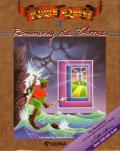 Could it be true? Indeed it was–the whole KQ series, updated to run on modern Windows versions and bundled for $20. Next to the KQ anthology were Space Quest and Police Quest collections as well.
Could it be true? Indeed it was–the whole KQ series, updated to run on modern Windows versions and bundled for $20. Next to the KQ anthology were Space Quest and Police Quest collections as well.
This is exciting stuff. The King’s Quest games were second only to the Zork series as far as my childhood game influences went. The early KQ games, like a lot of Sierra titles from that era, were really well-written and clever. I played King’s Quest 2 almost incessantly on my parents’ old-school Macintosh in junior high. I remember wandering all over the game world, mapping my progress with good old-fashioned pen and paper, saving the mermaid, outwitting the witch, and escaping the vampire. And I’d spent countless hours discussing the more difficult puzzles and challenges with my friend Raymond, whose love for the Sierra adventure titles exceeded even my own.
I can’t believe it’s taken so long to get here, but it’s just a terribly good idea to bundle up the old Sierra adventure game series and sell them. Some have aged better than others, but the basic puzzle-based gameplay works well even today, and as I’ve said before, I think it’s really important and inspiring to look back at the great moments of gaming history and remind ourselves that good gameplay can make you overlook even the crudest graphics.
There are so many excellent games that deserve to be revived in this fashion–dug out of the archives, tweaked so that they’ll run on modern operating systems, and bundled up with their sequels. It’s a real shame that the Ultima series, Infocom titles, LucasArts classics, and countless excellent Interplay games are so difficult to find; even those that were released in anthology form back in the 1990s often require massive hacking to run well on modern computers. You’d think that the companies that own these franchises could earn themselves a bit of extra cash by hiring somebody to update their classic DOS titles and make them available for online purchase through their websites. Maybe the re-issue of the KQ and other Sierra series is a step in that direction, although I’m afraid they won’t stick around on store shelves for more than a few months before disappearing into whatever abyss awaits Games That Are More Than Six Months Old.
I should note that one company which is doing this very thing–taking old titles, updating them, and re-releasing them–is Matrix Games, which is renovating an impressive number of aging computer wargames in this fashion. They’re helped by the fact that unlike other genres, good wargames tend to age relatively well since graphics have never been their main selling point. But here’s hoping that other companies with the rights to classic game titles consider investing a bit of money into renovating the classics.
And back to the topic of King’s Quest, I would be remiss if I did not mention the fan remakes of several KQ and other Sierra titles over at AGD Interactive. That sort of project can at least tide us over until game companies get serious about making their classic titles available again.




 by
by 



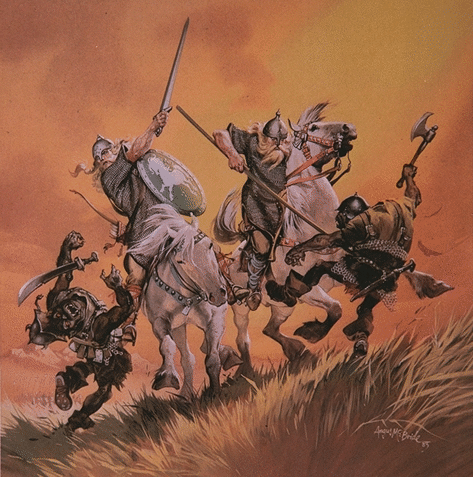
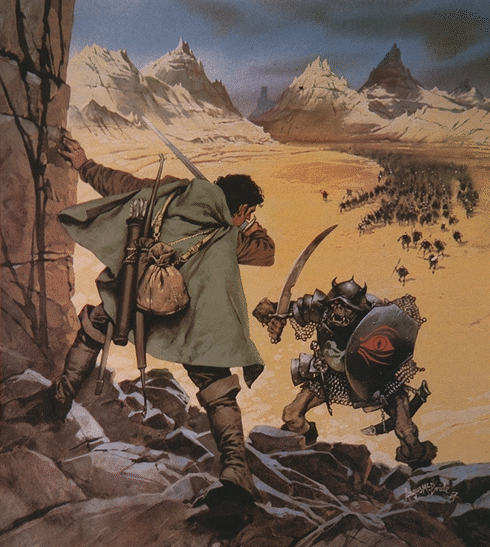
 This link is for my old pal
This link is for my old pal 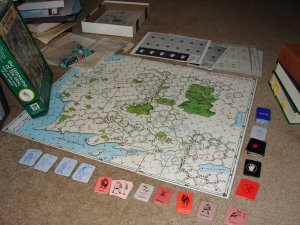 Today I want to reminisce about one of the games from the very earliest strata of that gaming pile–a curious and nearly-forgotten boardgame with which I was obsessed throughout junior high, and which eventually served as an entrypoint for me to the world of roleplaying games. The game is The Fellowship of the Ring, published in 1983 by Iron Crown Enterprises, and–like some of the Iron Crown RPGs I would later play–I loved it, although I didn’t always completely understand it.
Today I want to reminisce about one of the games from the very earliest strata of that gaming pile–a curious and nearly-forgotten boardgame with which I was obsessed throughout junior high, and which eventually served as an entrypoint for me to the world of roleplaying games. The game is The Fellowship of the Ring, published in 1983 by Iron Crown Enterprises, and–like some of the Iron Crown RPGs I would later play–I loved it, although I didn’t always completely understand it.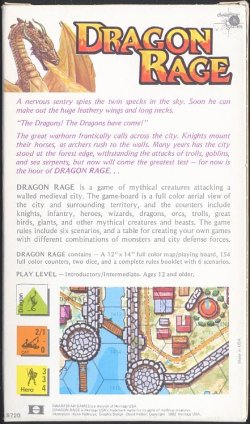

 Here’s a fun one: an
Here’s a fun one: an